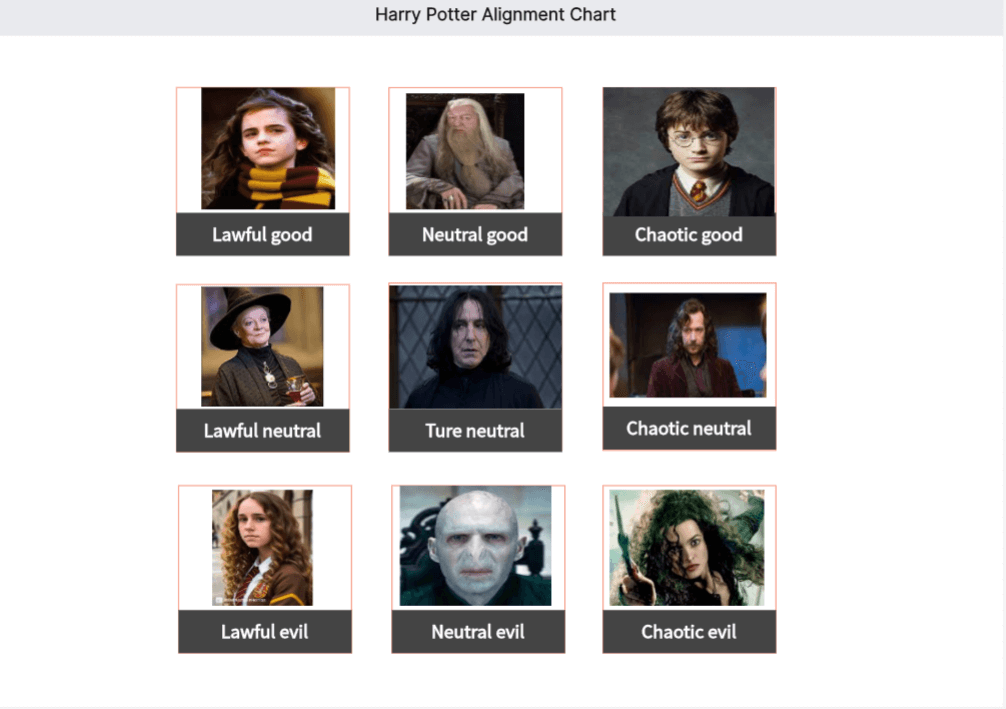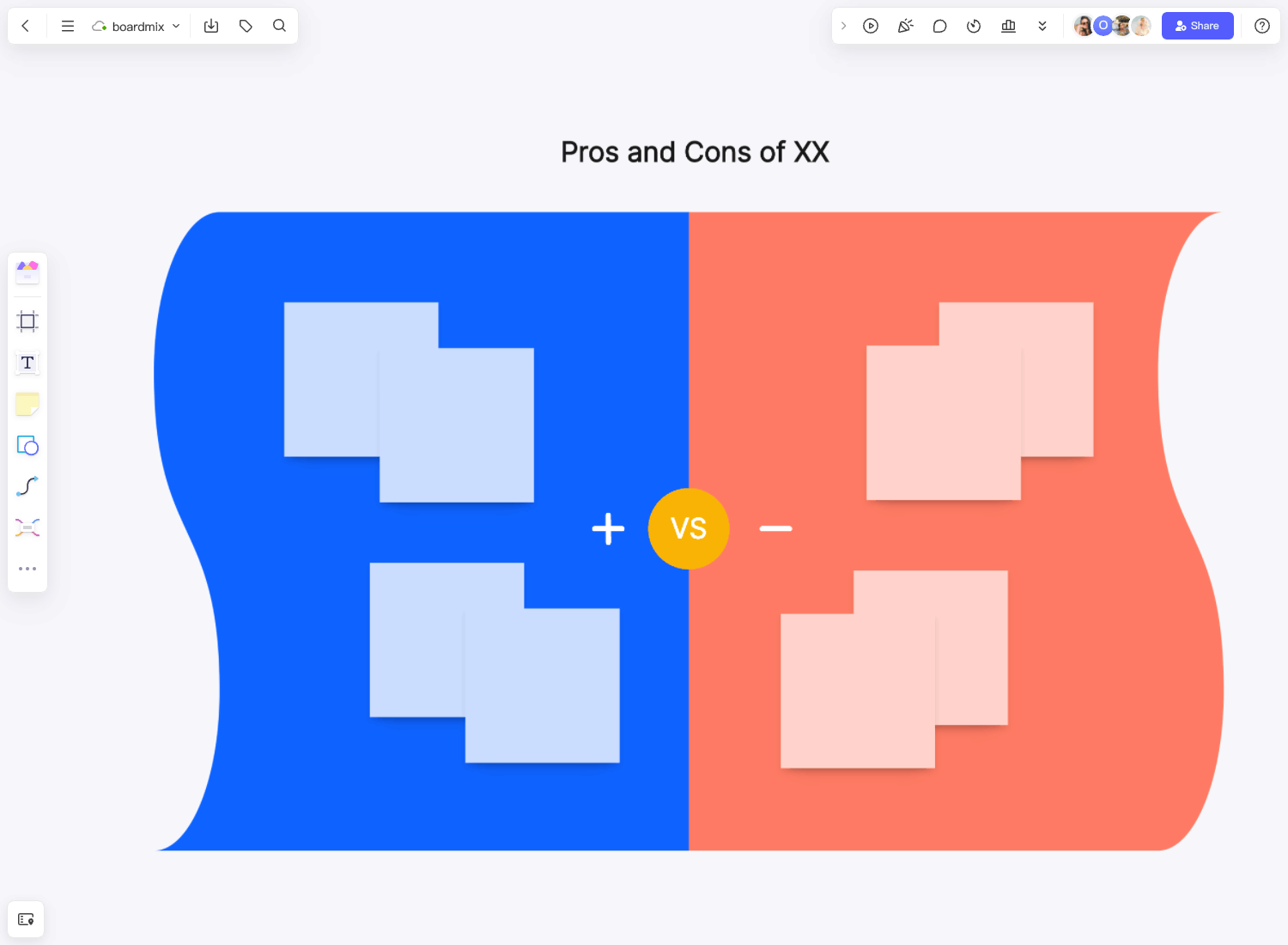What is an alignment chart?
An alignment chart will come in handy for someone who loves to compartmentalize fictional characters and get to know them more. Most businesses and organizations also turn to this diagram to better understand coworkers or to determine how target markets respond to specific situations.

If you look at an alignment chart template, you will see that it plots elements against two contrasting dimensions. Every alignment will represent a wide range of personal philosophies. While mapping the chart, you will discover that two aspects of a similar alignment can still differ slightly. Meanwhile, a few of them are entirely consistent.
What are the benefits of using an alignment chart?
Generally, one would not get direct answers using an alignment chart template. Instead, the chat will provide vivid visualizations, creating essential discussion about a specific topic. Most organizations use the chart to promote inclusive dialog within the group instead of merely making the diagram.
Using alignment on your favorite series or film characters allows you to reduce complexity and determine the concise relationships with each character. Furthermore, you can quickly develop the character's identity.
How to create your alignment chart?
Your chart will have two axes - the lawful versus chaotic and the good versus evil. Within these axes are nine sections which include the following:
- Lawful good. The characters you put here generally protect the innocent ones while upholding lawful authority. They also act with integrity and honor.
- Neutral good. They protect the innocent but have some issues with social structures. They can quickly adapt to various circumstances.
- Chaotic good. Some describe this alignment as the rebel. They believe in the good but value their conscience more than society's views about the right thing.
- Lawful neutral. These characters live by the code and will not attempt to bend from it.
- True neutral. They sometimes lack conviction. True neutral characters deal with situations as they come and act on them in whichever way they think best.
- Chaotic neutral. These people under this alignment are impulsive and try to avoid all the restrictions on personal liberty.
- Lawful evil. Characters here promise to keep their word and adhere to the code or law. However, they would also pursue their needs no matter what.
- Neutral evil. They do things they want if they believe they can escape it. These characters under this alignment do not care about following rules or possible collateral damages.
- Chaotic evil. These characters follow the worst impulses, regardless of the cost.
Before you plot the characters into your alignment chart template, think it through or discuss it with your peers. In some cases, you may have different perspectives or interpretations of the characters' personalities.
Finally, the chart lets you be as creative as possible in mapping the alignment chart template. In short, you can use symbols, photos, stickers, or other elements best for your diagram.
Some Popular Alignment Chart Examples:
Pokémon Alignment Chart
Hundreds of Pokémons are out there, and you can choose among your favorites when making the alignment chart. As you can see, the creator uses different colors for every alignment for better identification. Also, it pays to use images for each character as it will justify their placements in the chart.

Harry Potter Alignment Chart
Potterheads surely know the characters featured in the alignment chart template below. While you may disagree on specific areas where the characters are placed, remember that it is the creator's interpretation of the series' characters. As you can see, the chart uses the two axes to group the characters. It is also great that it uses images to represent every character.

Marvel Heroes Alignment Chart
You might have known the personalities of your favorite Marvel heroes, but it is also good to see their alignments through the template. They surely are heroes in their rights, but you can tell the good from the bad through the alignment chart templates. Also, the creator included notable quotes from every character. It is also a way to justify the placements on the chart.

Make an Alignment Chart with Boardmix
Step 1: Log in to Your Boardmix Account
To begin, you'll need to access your Boardmix account. Go to the Boardmix website and enter your login credentials. If you don't have an account yet, you can sign up for a new one for free.

Step 2: Search and Choose Alignment Chart Template
Once you're logged in, head over to the Template library. You can find this in the main dashboard. Search for the Alignment chart Template and click to use it for free.

Step 3: Customize and Edit Your Alignment Chart
Now that you've chosen the template, it's time to customize it according to your needs. You can use shapes, lines, drawing pens, icons, and other tools to decorate your template. The Activity Planning Template comes with several sections that you can fill out.
Step 4: Save Your Work, Share and Collaborate
When customizing your Alignment chart Template, Boardmix autosaves your progress, but it's good practice to manually save before exiting.
Next, share your Alignment chart to collaborate with your team. Click on the "Share" button on the top right corner of the screen, copy the sharing link, and send it to anyone whom you want to collaborate with. People can join this file to edit and collaborate on this file in real-time by clicking this sharing link. We encourage your team to leave comments, suggest edits, or ask questions online so you can adjust it in time.

FAQs about the Alignment Chart
How to decide a character alignment?
Firstly, you must know your characters well. To do this, you can examine their behaviors and tendencies and relate them to the different alignments available on the chart. As you already know, using the alignment chart template also allows you to understand the characters better, and placing them in the correct alignments is necessary.
What alignment is the most evil?
Some would say the neutral evil alignment is the most dangerous as it exudes pure evil without variation and honor. Meanwhile, most people would also choose the chaotic evil alignments as the most terrifying. Characters here will only care for themselves and will not think of orders and laws and the welfare of others. They can eliminate and hurt other characters out of anger or for sheer fun. Generally, one must be wary of those characters under the evil alignments as they can harm other characters on the chart.
Where does the alignment chart come from?
The alignment chart template came from the game Dungeons & Dragons. The game's creator Gary Gygax used to draw fantasy tales by authors Poul Anderson and Michael Moorcock to make a fun and memorable system for categorizing different players' characters before playing. At present, the chart is more than its gaming origins; it has become a piece of pop culture. The chart is now used in the business sector and other organizations to understand their peers better.






